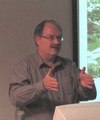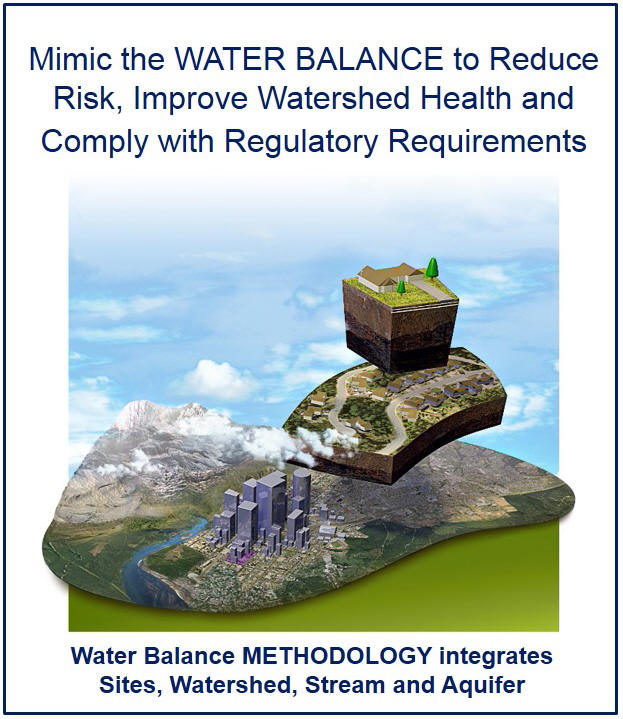TO TEST DRIVE…
To test drive the Water Balance Model Express for Landowners (“WBM Express”), click on any one of the four links below:
Water Balance Express for the Cowichan Region (Vancouver Island)
Water Balance Express for the District of North Vancouver
Water Balance Express for the City of Surrey (Metro Vancouver)
Water Balance Express for the Comox Valley (Vancouver Island)
Water Balance Express for Coquitlam (Metro Vancouver)
Water Balance Express for Membertou First Nation (Pitu’paq Partnership, Cape Breton)
Mimic the Natural Water Balance
“The first two demonstration applications of the web-based and interactive WBM Express are now LIVE. The District of North Vancouver in the Metro Vancouver region, and the Cowichan Valley Regional District on Vancouver Island, have both successfully  completed beta-testing and both versions are functional for public use,” announced Ted van der Gulik, President of the Partnership for Water Sustainability in BC and Water Balance Model Chair.
completed beta-testing and both versions are functional for public use,” announced Ted van der Gulik, President of the Partnership for Water Sustainability in BC and Water Balance Model Chair.
“The Express allows the homeowner to integrate and balance the three watershed-based performance targets established by the partner local government to mimic the Natural Water Balance.”
“Because the Express is hosted on the partner local government website, homeowners can quickly size and test landscape-based solutions – such as rain gardens and absorbent soil – that slow, sink and spread rainwater. The interface is no more complex than the dash board of a car.”
“The Express will enable local governments to more easily deliver on regulatory requirements related to protection and restoration of Watershed Health.”
A Bold Leap Forward
 “The Water Balance Model Express for Landowners represents a bold leap forward in the way it strips the problem to its essence. It is an accessible, affordable and effective tool. The Express solves the vast majority of common problems faced by a homeowner exploring ways to implement rainfall capture in accordance with a watershed plan, without requiring use of tools designed for more complex situations,” explains Dr. Charles Rowney, the Partnership’s Scientific Authority.
“The Water Balance Model Express for Landowners represents a bold leap forward in the way it strips the problem to its essence. It is an accessible, affordable and effective tool. The Express solves the vast majority of common problems faced by a homeowner exploring ways to implement rainfall capture in accordance with a watershed plan, without requiring use of tools designed for more complex situations,” explains Dr. Charles Rowney, the Partnership’s Scientific Authority.
Water Balance Methodology
In February 2014, the Partnership for Water Sustainability in BC released the Primer on the Water Balance Methodology for Protecting Watershed Health.
This is the fifth in the Beyond the Guidebook Primer Series, and provides step-by-step guidance on how to apply a science-based approach to quantify the “water balance performance targets” that are then used to populate the WBM Express.
“Protection of watershed and stream health ultimately involves maintaining the natural proportion of rainwater entering streams via three pathways: surface flow, interflow (shallow sub-surface flow), and groundwater flow,” explains Jim Dumont. He is the  Partnership’s Engineering Applications Authority.
Partnership’s Engineering Applications Authority.
“The Water Balance Methodology examines the flow paths of water in the watershed, and the flow in streams. To replicate natural processes, it is necessary to establish performance targets that define how to ‘slow, sink and spread’ rainwater.”



